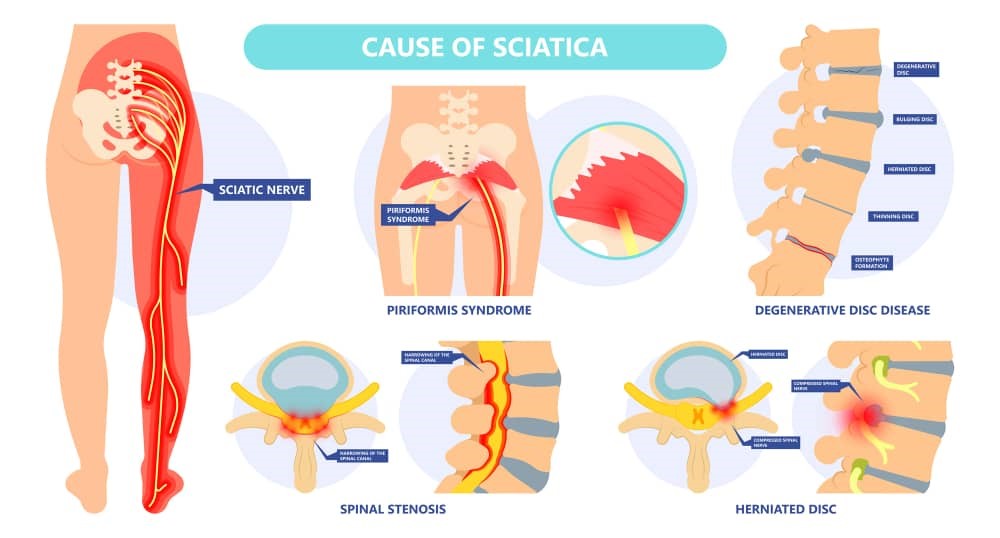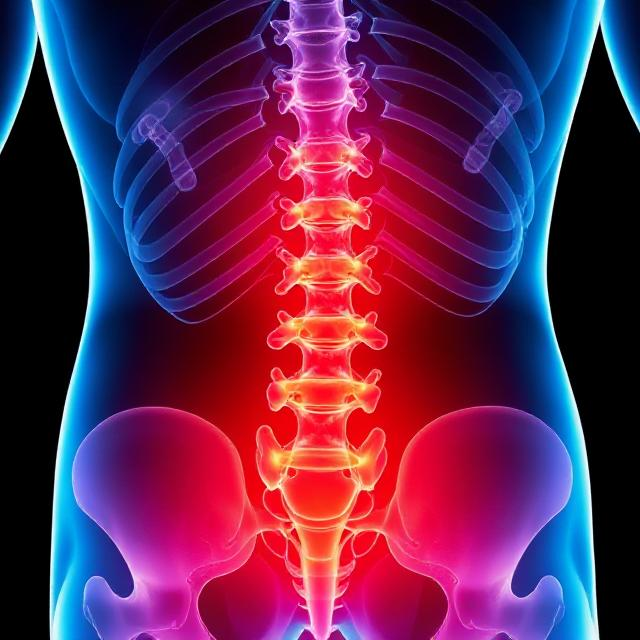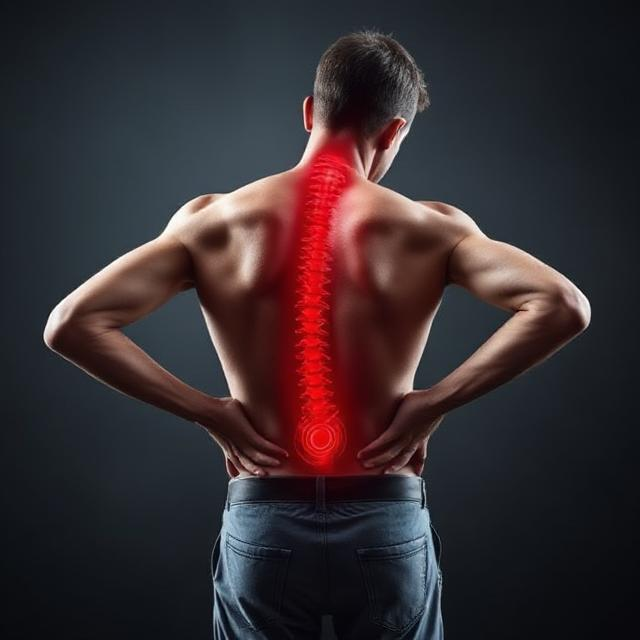5 Reasons Why Sciatica Pain Occur


5 Reasons Why Sciatica Pain Occur
Sciatica is a term that refers to pain, numbness, or tingling that originates I the lower back and radiates along the path of the sciatic nerve. The sciatic nerve, is the longest and widest nerve in human body, running from the lower back, through the buttocks, and down to the back of each leg. Sciatica is not a medical condition itself but rather a symptom of an underlying issue, such as herniated disc, spinal stenosis, or any other conditions that irritates and compress the sciatic nerve.




Sciatica pain often caused by irritation of the sciatic nerve. Here are five common reasons of sciatica pain.
Herniated disc
A herniated disc is one of the most common factors contributing to sciatica pain. The spinal disc act as cushion between vertebrae. When the soft inner material of the disc (nucleus pulposus) leaks out through a tear in the outer layer (annulus fibrosus), it can compress and irritates the adjacent sciatic nerve roots, causing pain, numbness and tingling along the nerve pathway.
Spinal Stenosis
Spinal stenosis is a condition characterized by narrowing of the spinal canal, which houses the spinal cord and nerve roots. This narrowing can put pressure on the sciatic nerve, leading to sciatica symptoms. Spinal stenosis is often associated with aging and degenerative changes in the spine.
Spondylolithesis
Spondylolisthesis occurs when one vertebra slips forward over another, typically in the lumbar spine. This misalignment can cause compression of the sciatic nerve, resulting in pain, numbness, and weakness in the leg. Spondylolisthesis can be caused by degenerative changes, fractures, or congenital anatomical abnormalities.
Piriformis syndrome
The piriformis muscle is located in the buttocks, and the sciatic nerve runs beneath or, in some cases, through this muscle. If the piriformis muscle spasms or tightens, it can irritate the sciatic nerve, causing sciatica-like symptoms. Piriformis syndrome may result from injury, overuse, or irritation of the muscle.
Degenerative Disc Disease
Degenerative disc disease involves the natural wear and tear of the spinal discs over time. As the discs degenerate, they may lose their ability to provide proper cushioning between the vertebrae. This can lead to the collapse of disc space, which may in turn result in compression of the sciatic nerve roots and the development of sciatica symptoms.



